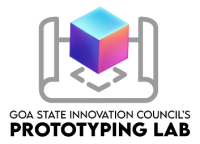Unique Registration Number:339
Innovator Name:
Aishwarya Singh Gaur
Sweta Bhise
Simran Bepari
Shrutika Gadekar
Contact No: +917972649606/ 7083082489 / 9511892837 / 8830015539
Contact Email: shrutikagadekar333@gmail.com / swetabhise9111999@gmail.com
Project Objective:
The objective of this project is to use machine learning model to perform automated diagnosis for breast cancer by checking if the tumor is cancerous or non-cancerous. The algorithms we intend to use are Naïve Bayes, Random Forest, Support Vector Machine (SVM), K-Nearest Neighbor (KNN), Logistic Regression, and Convolution Neural Network (CNN). With the results that we obtain after comparing the different algorithms based on our selected set of attributes, we intend to classify the breast cancer into benign (non-cancerous tumor) and malignant (cancerous tumor) at an early stage in comparatively less amount of time.
Abstract:
Breast cancer is mostly identified among women and is a major reason for increasing the rate of mortality among women. Early diagnosis of any disease can be curable with a little amount of human effort. Breast cancer is one of the diseases that could be cured when the disease is identified at earlier stages before it spreads across all the parts of the body. The lack of prognosis models results in difficulty for doctors to prepare a treatment plan that may prolong patient survival time. Hence, time requires developing the technique which gives minimum error to increase accuracy. In the project we have used a Machine Learning model to perform automated diagnosis for breast cancer. This method employed Convolutional Neural Network as a classifier model and Recursive Feature Elimination (RFE) for feature selection. Also, five algorithms Support Vector Machine, Random Forest, K-Nearest Neighbour, Logistic Regression, Naïve Bayes classifier have been used in the project. The system experimented on BreaK-Hist Dataset. The Dataset is partitioned into different sets of the train-test split. The performance of the system is measured on accuracy and precision. Activation function such as ReLu has been used to predict the outcomes in terms of probabilities
Project Outcome/result/findings:
We have been working on our Convolutional Neural Network model and segregating data. The results obtained till now from our execution and observation are not up to our expectations, therefore we are working on training the model again.
Innovative Approach:
The only way used to distinguish between Benign and Malignant tumor is by physical diagnosis by the doctors which sometimes may be prone to human errors. Through our model we aim to get highest possible accuracy in terms of distinguishing between the two cancer cells.
